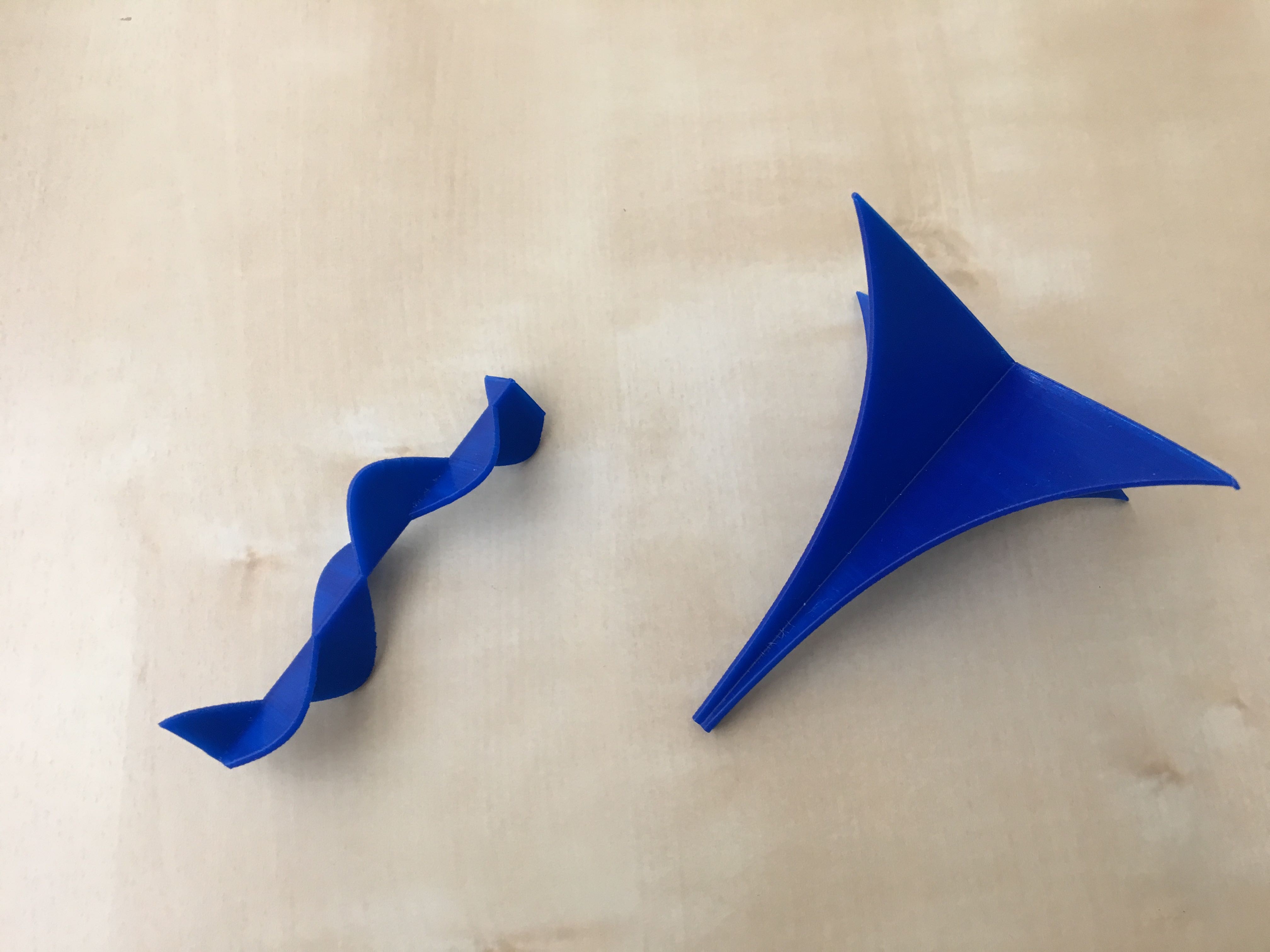This project is a little different from many of the other Hackaday project, since we are not focused on building one thing, but rather on coming up with an approach to solve a problem that is made possible with technologies like 3D printing.
Now that this has generated a lot of energy and interest, we have to stop and think where we will take it beyond this prize entry. A lot of people ask us if we have a "3D printing curriculum." By that they (usually) mean a few models they can download and plug into an existing curriculum.
Although we appreciate that an incremental approach has its power (and our books support that approach) we think the thing to do now is to go back to our original thought: how can calculus in particular and math in general be taught differently if one starts with the "interesting stuff" and then gradually walks in the calculation part?
Several people suggested we read "The Mathematicians Lament," by Paul Lockhart, (available in a variety of places depending on what online databases you have access to search on the title and name). Lockhart was (and apparently still is) a K-12 math teacher in New York. His premise is that if we taught art the way we teach math, the first few years would be all about creating the perfect brush stroke, and everyone would hate art. He suggests finding ways to show the beauty and application of math first, and teaching the routine stuff later. We agree!
As we have explored this space with this project so far, it has become clear to us that we need to teach calculus in a very different order than it normally is taught. Therefore, we will need to create a new end-to-end system of teaching (and learning) the subject, and we are currently thinking hard about what that system looks like and what it should include.
Not everything has worked out. The "derivative machine" was more complex than expected, and so it violates our design rule that anything we put out there should be build-able by a good student or a time-pressed teacher. Rich is going to continue to tinker with it to see if a simple version might emerge, but as far as this project is concerned going forward we are going to focus on 3D printing and maybe a few more Circuit Playground applications as a good lowest common denominator.
How Far Can This Go?
So, we see our challenge as finding a good way to lay out all of calculus (whatever that winds up meaning) with physical intuition at its core. We have been gratified with how many people have encouraged us and made suggestions, in some cases getting quite energetic about it.
In the coming months we will be thinking about how to scale this, finding good groups to collaborate with, and seeing how far we can stretch the premise here. Can we usefully go beyond the PID example (in which everything is a function of time) to more-complex systems in which several things are varying at once? Can we use these parts to help us think about differential equations? Or should we be looking at how to start with these ideas and move back the other direction toward geometry, algebra, and the notorious algebra II?
Stay tuned, and follow the project or contact us to keep in touch with its ultimate incarnation. Thanks for coming along for the ride so far!
 Sinusoids and exponentials
Sinusoids and exponentials
 Joan Horvath
Joan Horvath
Discussions
Become a Hackaday.io Member
Create an account to leave a comment. Already have an account? Log In.